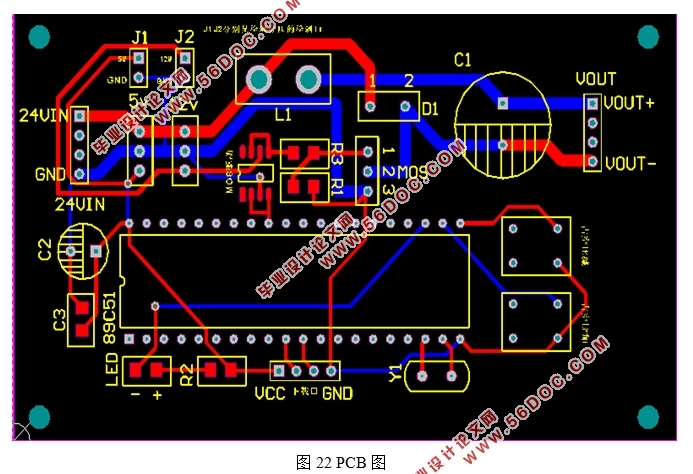基于单片机控制的降压直流电源设计
来源:wenku7.com 资料编号:WK717210 资料等级:★★★★★ %E8%B5%84%E6%96%99%E7%BC%96%E5%8F%B7%EF%BC%9AWK717210
以下是资料介绍,如需要完整的请充值下载。
1.无需注册登录,支付后按照提示操作即可获取该资料.
2.资料以网页介绍的为准,下载后不会有水印.资料仅供学习参考之用. 密 保 惠 帮助
资料介绍
基于单片机控制的降压直流电源设计(论文9400字)
摘要:随着社会发展,人们对直流可调电源的需求越来越大,其中输出电压低于输入的场合更是不计其数。本文主要介绍一种以单片机控制为核心的降压式可调直流电源设计,本次设计的重点是各部分电路的设计及硬件选型,同时还包括软件设计及调试,论文通过多种方案的对比,最终确定了以STC89C51单片机为主控制器,buck电路为主电路,通过独立按键改变PWM波占空比从而改变输出电压的方案。软件部分主要通过函数实现按键模块的功能。通过反复的实验及调试,系统最终实现20v直流输入,按键调节输出20v以内电压的功能。该电源体积小损耗低并且引入了单片机进行智能化控制,在一般的低限度供电场合都能完美运行,具有一定的研究意义。
关键词: 直流稳压电源;单片机;buck电路
Design of step-down DC power supply based on single chip microcomputer
Abstract: With the development of society, there is an increasing demand for dc tunable power supply. This paper mainly introduces a kind of single chip microcomputer as the core to buck type adjustable dc power supply design, the design of hardware circuit of each part is the focus of the design and selection, also includes the software design and debugging, the paper through a variety of scheme comparison, finally determine the predominantly STC89C51 microcontroller controller, buck circuit, main circuit, through independent key change wave PWM duty ratio and transform the scheme of the output voltage. The software part mainly realizes the function of the key module through the function. Through repeated experiments and debugging, the system finally realizes the function of 20v dc input and the key to adjust the output voltage within 20v. The power supply has a small volume and low loss, and a single chip microcomputer is introduced for intelligent control.
Keywords: DC regulated power supply; single chip microcomputer; buck circuit

目 录
1 引言 5
1.1 直流稳压电源的研究背景和意义 5
1.2 直流稳压电源的发展现状 5
1.3 设计内容及章节安排 5
2 硬件分析 6
2.1电源模块选择 6
2.2单片机芯片选择 7
2.3按键模块设计 10
2.4驱动模块的选择 11
2.5 降压电路设计 12
2.6 报警装置的选择 15
3程序设计 16
3.1主程序流程图 16
3.2独立按键程序 17
3.3 LED报警程序 19
4硬件制作与调试 20
4.1硬件制作 20
4.2硬件调试 20
5总结与展望 23
参考文献 24
致谢 25
|



